For the first time in 56 years, Cartier introduces new supple Love bracelet
Sign up now: Get ST's newsletters delivered to your inbox
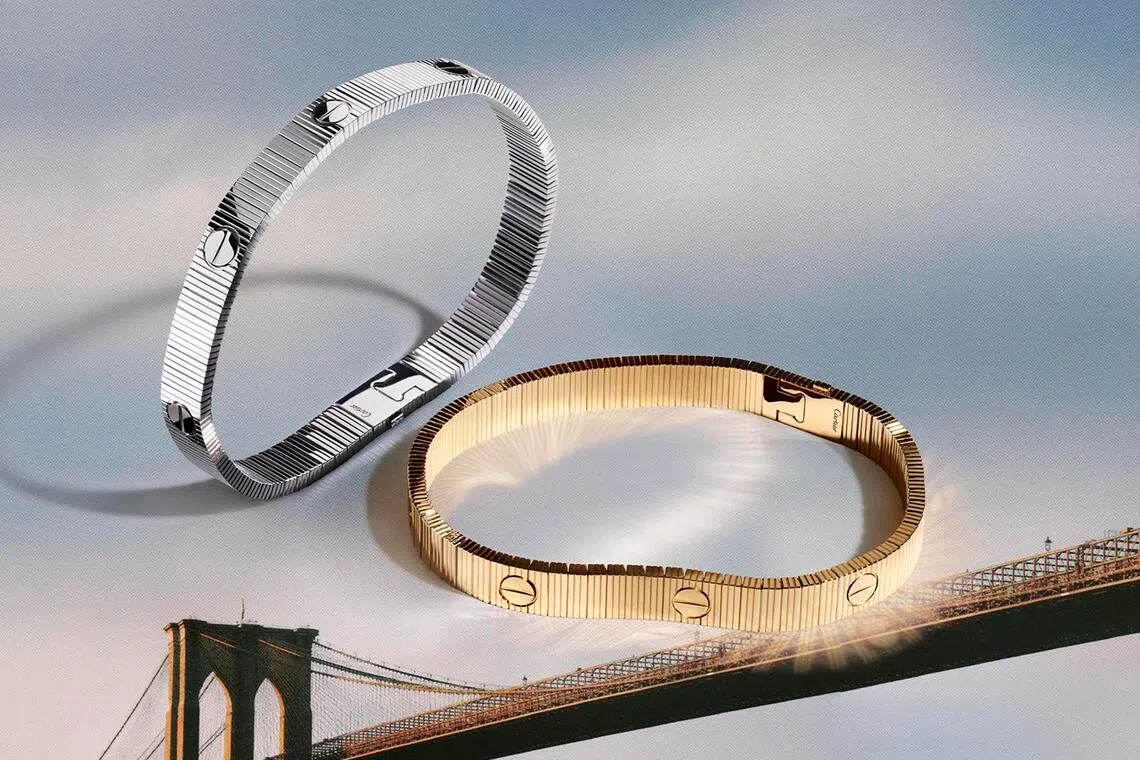
Cartier Love Unlimited Bracelets in White and Yellow Gold.
PHOTO: CARTIER
Follow topic:
SINGAPORE – The quintessential luxury bracelet stack these days has a few key suspects: a nail-shaped bangle here, a string of four-leaf clovers there.
Mixing brands and even precious with costume jewellery has become the norm, but every aspirational “it” girl knows no stack is complete without a Cartier Love bracelet.
Simple in appearance but instantly recognisable, the hard bangle with visible screws is one of the most-sought-after pieces of jewellery.
Beyond trend-chasing, the French jeweller’s bracelet has a backstory that goes deeper than status signalling. The symbol of romance was created in New York in 1969 by Cartier designer Aldo Cipullo, who made the then radical decision to leave the screws visible – to be fastened using a special screwdriver that comes with the bracelet.
The unisex piece with two rigid arcs was dubbed a precious handcuff, since two people are needed to secure the screws. By wearing it, every couple could proclaim their love for all to see.
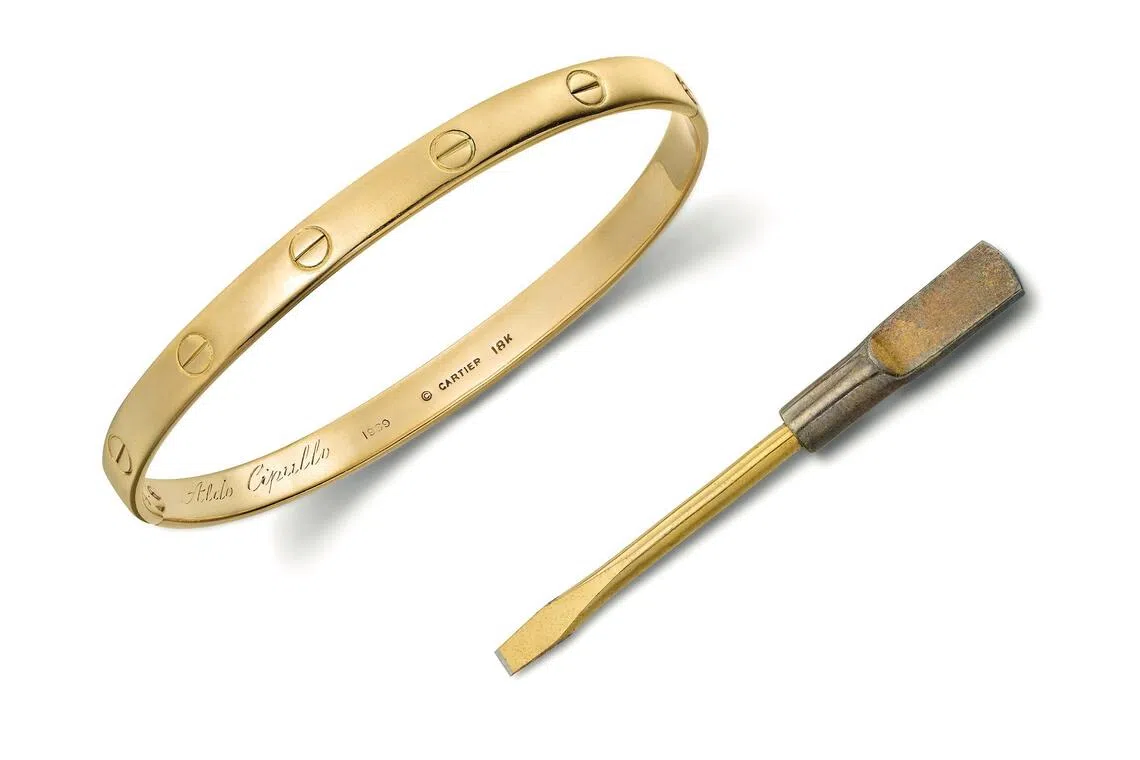
Cartier Love bracelet with screwdriver.
PHOTO: CARTIER
Over the decades, it was reimagined as a ring, and in different shades of gold and with coloured stones – an ever-evolving expression of love, sealed with a screwdriver.
Now, for the first time in its 56-year history, the hard oval bracelet has been given a new interpretation: a supple, fully flexible take. Ergonomic and more elegant, the Love Unlimited bracelet can be attached to another, in pairs or infinitely, wrapped around the wrist like a second skin.
The fluidity was achieved by multiple gadrooned links punctuated by the characteristic screws, each one spaced evenly apart to preserve the harmony and proportion of the design, across all bracelet sizes. It took more than 100 trials and prototypes to achieve the final product.
The novelty was about three years in the making, but the decision to create it was quick, says Mr Pierre Rainero, Cartier’s image, style and heritage director.
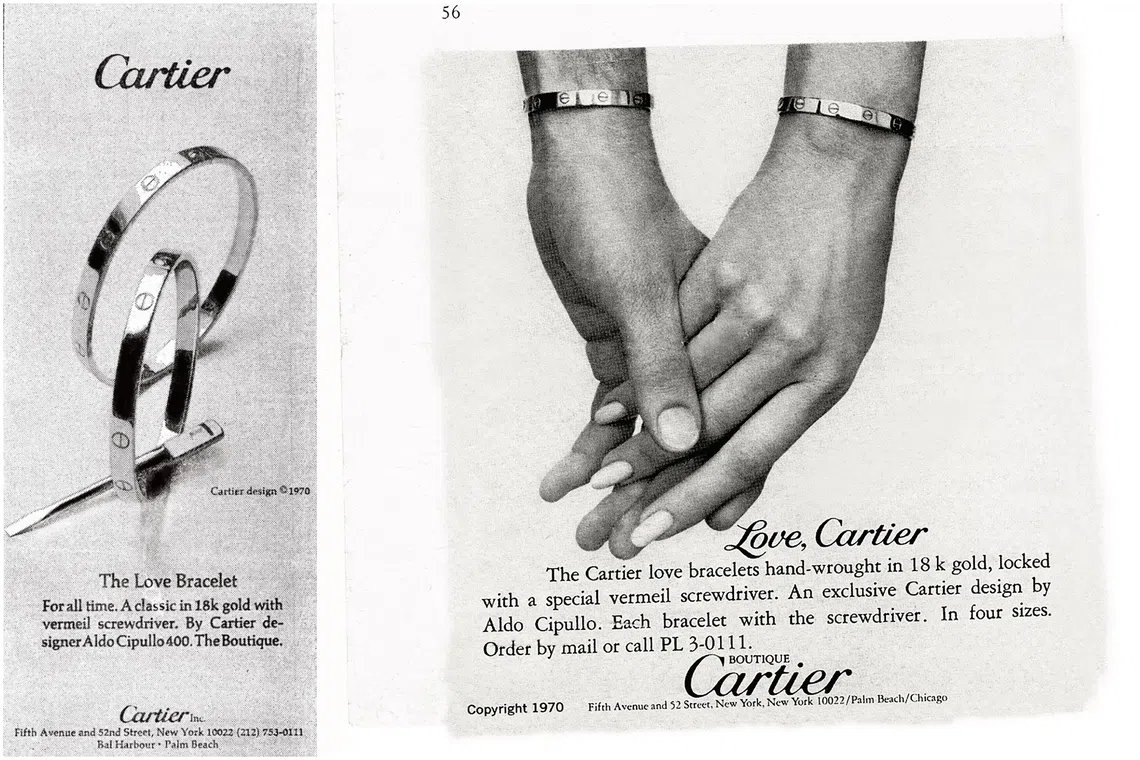
Cartier Love bracelet advertisements from 1970.
PHOTOS: CARTIER
In an exclusive video call with The Straits Times from Paris, where he is based, he says the luxury house has always had the philosophy of cultivating strong, original design. “We have a mission to cultivate new forms of beauty. We’re always looking forward and proposing new objects of desire – because life is better when you’re surrounded by beauty.”
One underrated facet of the new bracelet is how its suppleness is not immediately perceived by an observer, says Mr Rainero.
A patent-pending invisible clasp system both allows for the joining of multiple bracelets and hides the clasp – such that the naked eye sees only a ribbon of gold, sans cuts and links.
“You notice it as a traditional bracelet. But for the person who wears it, there’s an incredible difference – in terms of the way the clasp is conceived, and the comfort.”
How the bracelet flows and clings to the body is akin to the maison’s distinctive approach to its high jewellery, adds Mr Rainero. “We believe that the better it fits the body, the better it accompanies your movement, and the better it conveys an idea of elegance.
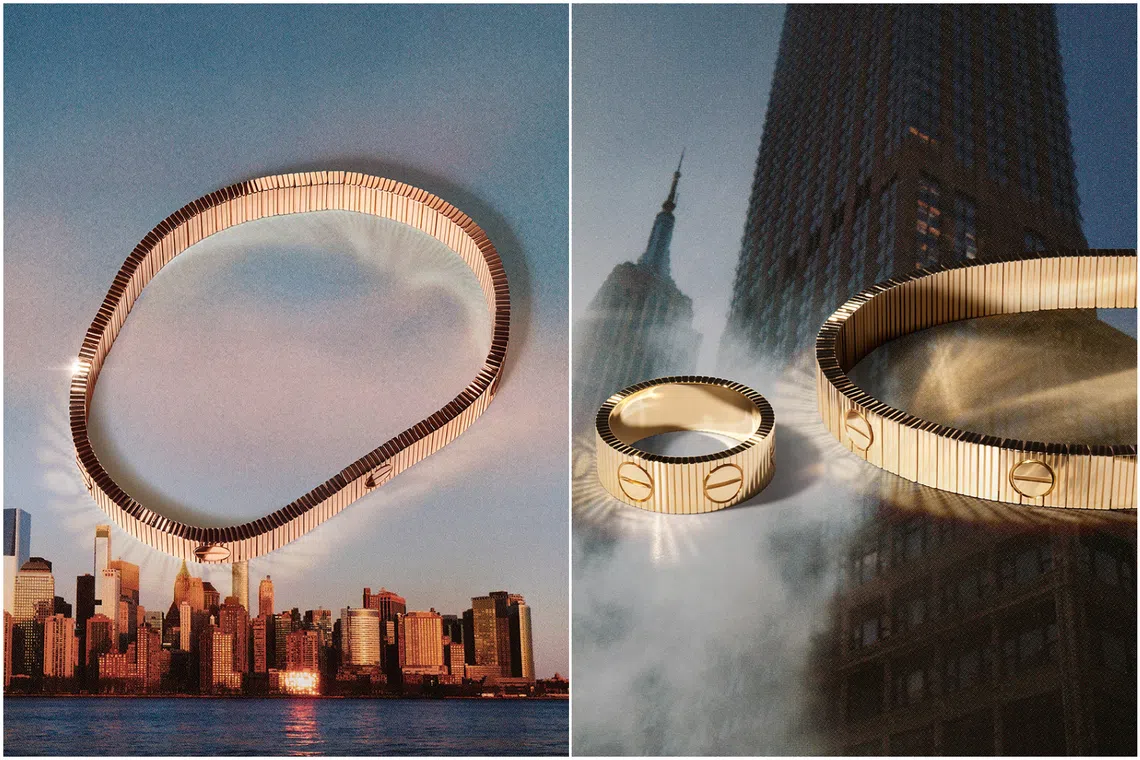
Cartier Love Unlimited bracelet in rose gold, and Love Unlimited ring and bracelet.
PHOTOS: CARTIER
“So, it was interesting to introduce that in the Love bracelet – because the rigidness of the Love bracelet is part of the concept, where you feel it, you feel your engagement. But since this symbolism is known, we felt free to go further in studying the supple version.”
Strong design, to him, is the possibility for one design to contain many variations. And Cartier wears this strength proudly. Mr Rainero points to the example of the square-shaped Trinity ring, released in 2024, as exploring new possibilities from an original design.
It was a bold take on the 101-year-old ring characterised by three intertwined bands in three colours of gold.
Tweaking a classic carries risks, but the house stays the course in its aim to fuel desire, he notes. “Even if Love didn’t exist, this object should be desirable as it is today. The idea of modernity is a touchy one; what defines modernity is that you want it now. The best way to evaluate if we should introduce it is that feeling that people will wear it and desire it today.”
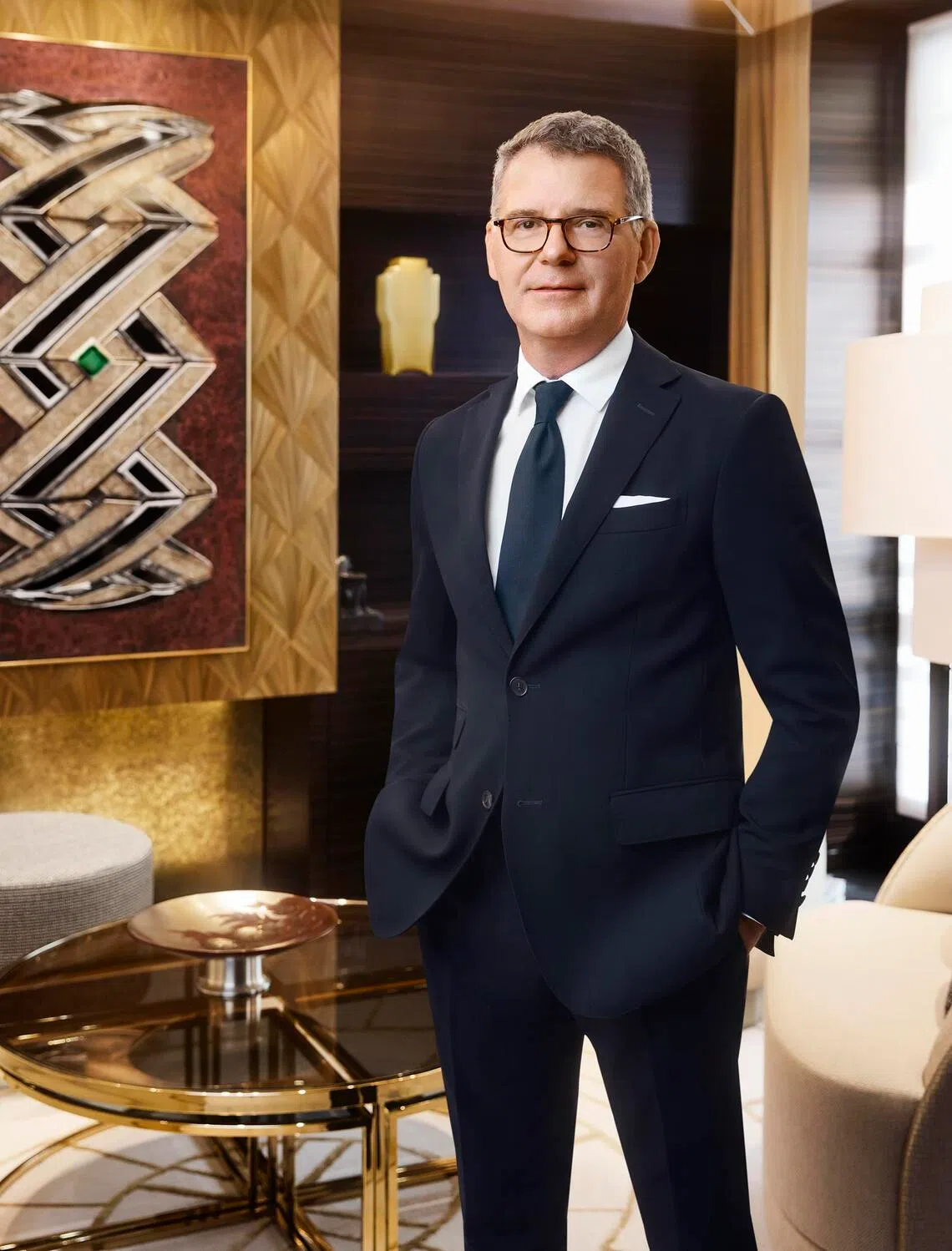
Mr Pierre Rainero, Cartier’s image, style and heritage director.
PHOTO: CARTIER
Love in the time of fakes
Rather than enforce meaning on the Love Unlimited, Cartier has chosen to let customers make what they will of the piece. After all, to a certain extent, the presence of a symbol belongs to the wearer, says Mr Rainero.
“There will be their own projections. Despite everything we think on our side, the role that a piece of jewellery plays in the life of people is very difficult to imagine beforehand – and that’s the magic of jewellery.”
But do the new design and clasp, which make putting on the bracelet independently easier, alter the original meaning behind Love?
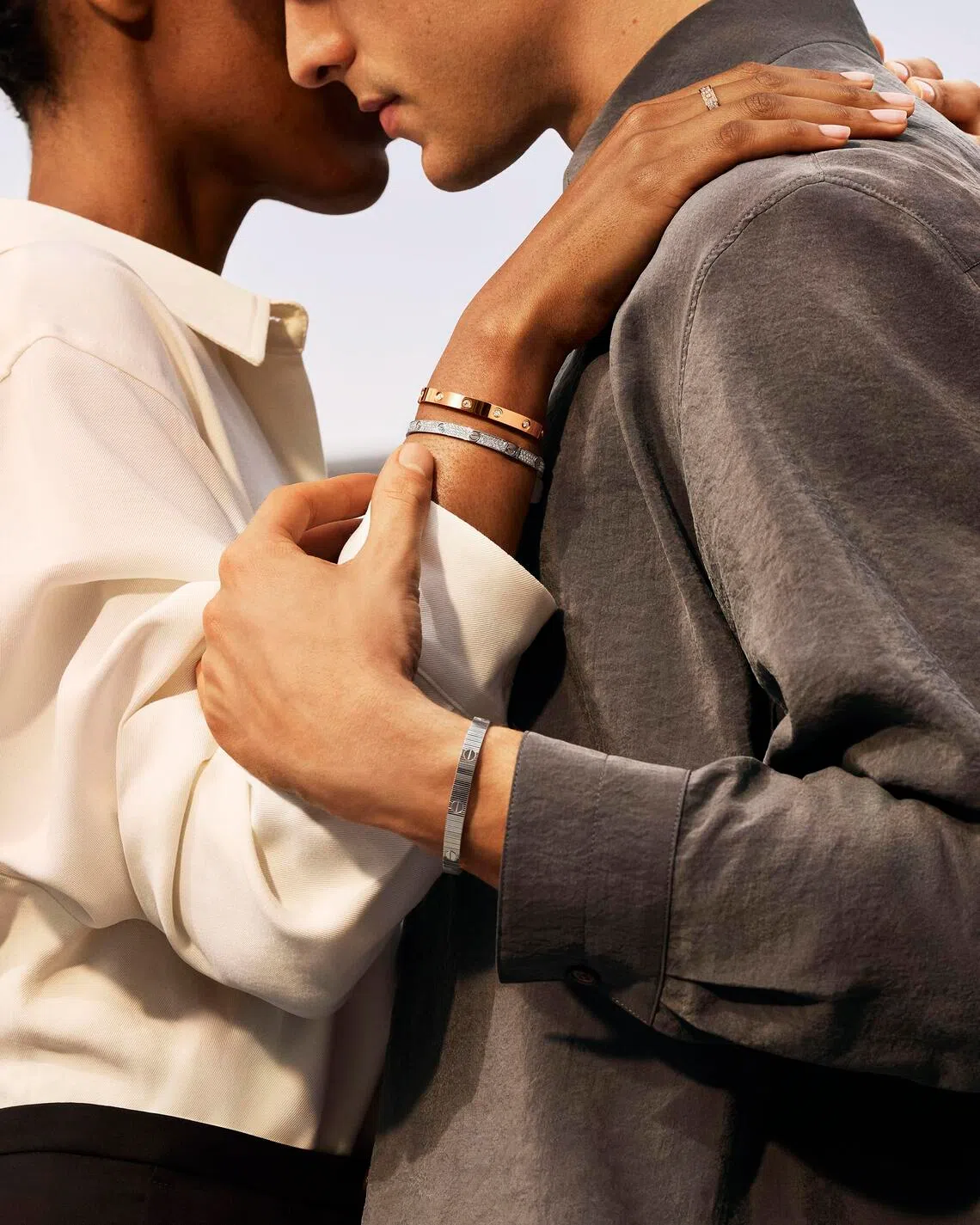
Love and Love Unlimited bracelets and wedding bands.
PHOTO: CARTIER
Probably, says Mr Rainero, but Cartier already sees that many men and women today buy the bracelet independent of romantic intent. “Now, it’s more like an object that marks an important event in your life.”
Naturally, such an iconic design is bound to draw envy and intrigue. The Love bracelet is one of the most-copied pieces of jewellery, with knock-offs that span cheap to well-made to capitalise on a mass desire to align with luxury.
Could the rise of dupe and superfake culture be a factor in Cartier’s decision to launch a new bracelet?
Mr Rainero shuts down the suggestion, but says: “Copies are the result of success. Of course, we think it’s bad to see bad copies, for obvious reasons like protection of the original idea.”
If imitation is the sincerest form of flattery, then the dupes should be testament to the Love bracelet’s influence. Mr Rainero observes this in the normalising of genderless jewellery, the way people stack bangles and the trend of mixing costume with precious jewellery.
“In terms of being copied, there’s nothing we can do about that. But I think more and more, people do value authenticity.”
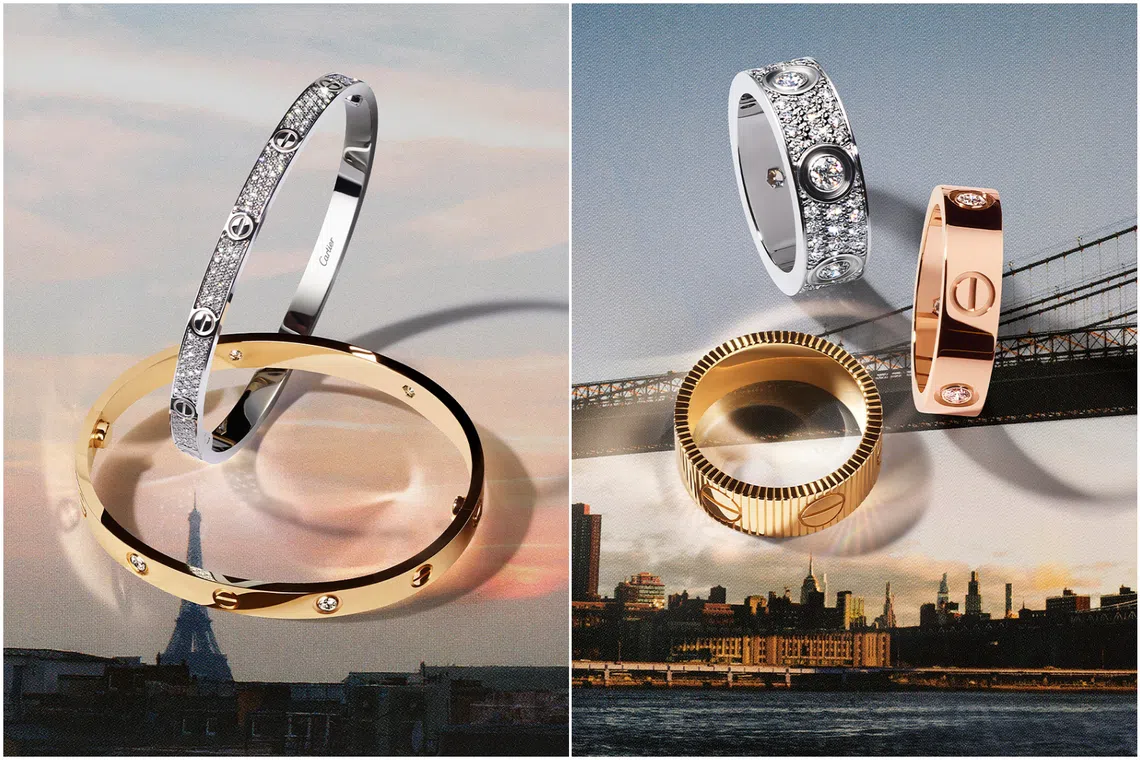
Cartier Love bracelets, and Love and Love Unlimited rings.
PHOTOS: CARTIER
That authenticity comes at a steep price. The Love Unlimited bracelet starts at $13,000 for one in yellow gold, while the Love Unlimited ring starts at $3,700. The Love bracelet in a small size costs $7,150.
Despite global economic uncertainty and ailing attitudes towards luxury, however, Cartier has remained resilient.
Sales for its parent company Richemont’s jewellery division – which includes Cartier, Van Cleef & Arpels, Buccellati and Vhernier – grew 11 per cent in the first quarter of 2025.
Fashion industry publication Vogue Business reported that Cartier’s sales for the fiscal year 2025 hit an estimated €11.1 billion (S$16.8 billion), making it the world’s largest jeweller. Of that, jewellery represented 63 per cent of Cartier’s sales, with high jewellery contributing 10 per cent.
What will never change, Mr Rainero says with confidence, is mankind’s curiosity and desire to align with beauty. Jewellery lies at that intersection.
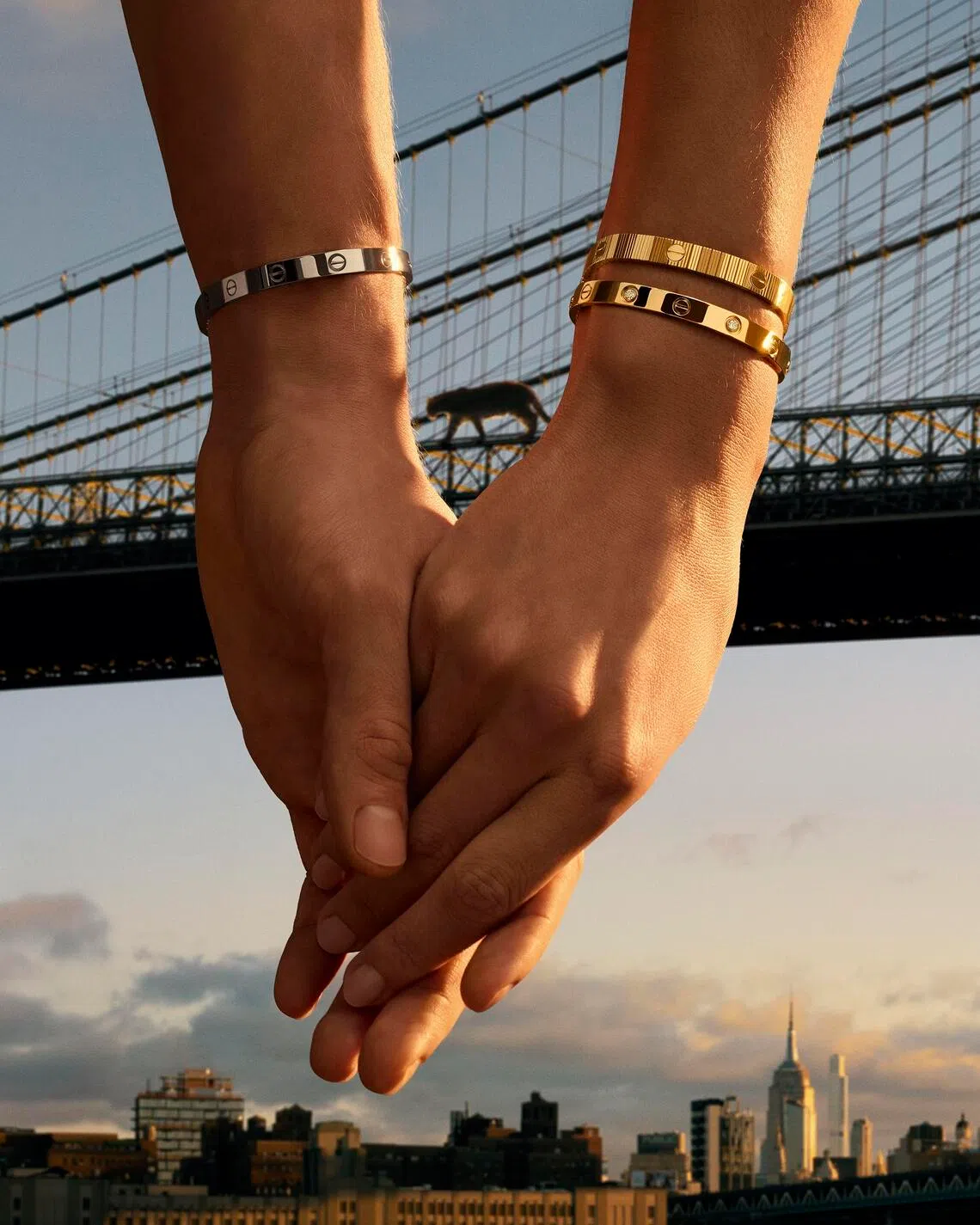
Cartier Love and Love Unlimited bracelets.
PHOTO: CARTIER
“The preciousness of jewellery is at the heart of the importance you give to those objects and those feelings. If it’s not precious, it doesn’t have the same power to encapsulate what you want it to mean. So, the preciousness is, for me, intrinsically linked to that idea of expressing important moments,” he adds.
Throughout the decades and changing definitions of love, Cartier’s role in romance and uplifting people’s lives is a given, he notes.
“When you are a jeweller by essence, you know that those objects will play that role for people, because they are the container of symbols and the big events of your life. Jewellery plays a very important symbolic role. That’s what distinguishes jewellers from other providers of beautiful objects.”


